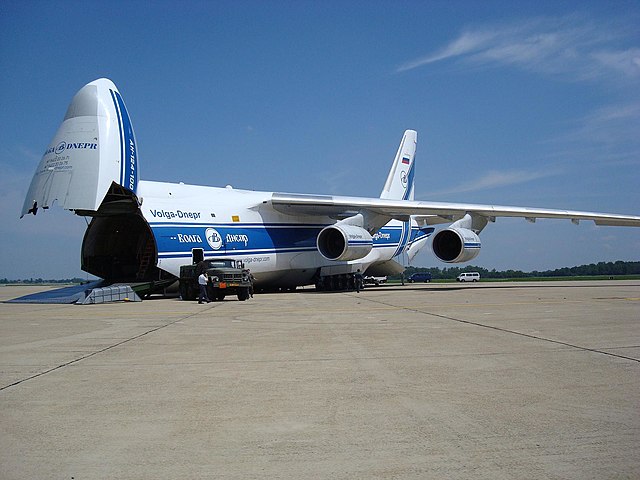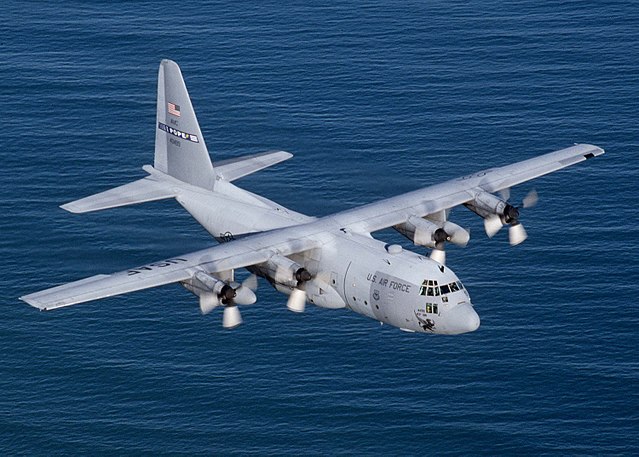The Arado Ar 232 Tausendfüßler, sometimes also called Tatzelwurm, was a cargo aircraft that was designed and produced in small numbers by the German aircraft manufacturer Arado Flugzeugwerke. It was designed during the first half of the Second World War in response to a request by the Reichsluftfahrtministerium for a successor or supplemental transport aircraft to the Luftwaffe's obsolescent Junkers Ju 52/3m. The Ar 232 introduced, or brought together, almost all of the features now considered to be standard in modern cargo transport aircraft designs, including a box-like fuselage slung beneath a high wing; a rear loading ramp, a high-mounted twin tail for easy access to the hold and features for operating from rough fields. It was initially requested to be powered by a pair of BMW 801A/B radial engines, however, an alternative arrangement of four BMW Bramo 323 engines was adopted instead due to a lack of capacity.
Arado Ar 232
An Ar 232A-0 in 1945
A cargo aircraft is a fixed-wing aircraft that is designed or converted for the carriage of cargo rather than passengers. Such aircraft generally feature one or more large doors for loading cargo. Passenger amenities are removed or not installed, although there are usually basic comfort facilities for the crew such as a galley, lavatory, and bunks in larger planes. Freighters may be operated by civil passenger or cargo airlines, by private individuals, or by government agencies of individual countries such as the armed forces.
A Volga-Dnepr Airlines An-124 prepares for loading in 2008
The Vickers Vernon, introduced in 1921, was the first cargo plane for military troops
The Arado Ar 232, the first purpose built cargo aircraft
A U.S. Air Force Lockheed C-130 Hercules, the archetypal military transport aircraft, over the Atlantic Ocean in 2014





